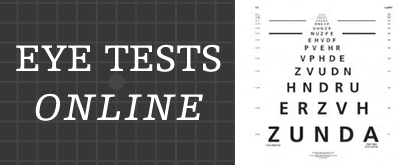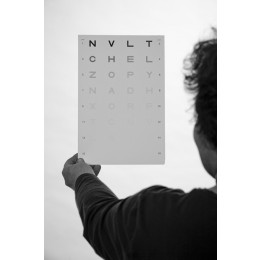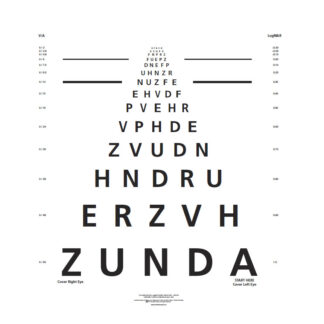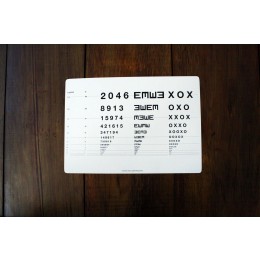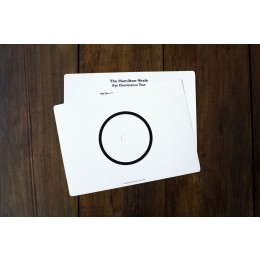Description
Hamilton-Veale Contrast Sensitivity Test
What is a Contrast sensitivity test
A contrast sensitivity test, checks for the ability to differentiate between light and dark (contrast). This ability, is as much an important sense as 20/20, allowing us to be able to carry out everyday tasks safely.
The Hamilton-Veale Contrast Sensitivity Test (photo below), is an effective means of monitoring potential decreases in contrast sensitivity function over time. Even though a person is provided with the best possible refraction (glasses, etc…) they may still complain of not seeing clearly. This problem is often related to a loss of contrast sensitivity.
A TEST FOR THE HIDDEN LOSS OF VISION
Eye specialists routinely test eyes for visual acuity, 20/20 or 6/6.
Seldom do they test for the other most important functions of vision; Fields and Contrast Sensitivity.
This easy to understand chart ,will test for a loss in Contrast Sensitivity. Loss of Contrast Sensitivity will indicate a serious loss of visual function, and this loss is usually a sign of eye disease.
Ophthalmic professional advice should be sought if a loss in contrast sensitivity is detected.
Remember that a 20/20 result, will not always uncover a possible hidden loss in contrast sensitivity.
The History of the Hamilton Veale Contrast Sensitivity Test
Why John developed the Hamilton Veale?
Previous testing charts, such as The Pelli-Robson chart, were large, complicated to use and to interpret. As a result, it is not used often enough, in clinical practice or for home testing.
Contrast sensitivity is of concern to everyone interested in diagnosing and treating vision impairment. Eye specialists routinely test eyes for visual acuity, 20/20 or 6/6.
Seldom do they test for the other most important functions of vision; Fields and Contrast Sensitivity.
There is a need for an easy to understand chart that will test for a loss in Contrast Sensitivity. Loss of Contrast Sensitivity will indicate a serious loss of visual function, and this loss is usually a sign of eye disease.
Ophthalmic professional advice should be sought if a loss in contrast sensitivity is detected.
Remember that a 20/20 result in visual acuity will not always uncover a possible hidden loss in contrast sensitivity.
A test for the hidden loss of vision
John Veale has spent many years developing and testing his contrast sensitivity chart to assist in the measurement of visual loss.
The final product is easy to use, easy to store and easy to track any changes in vision.
